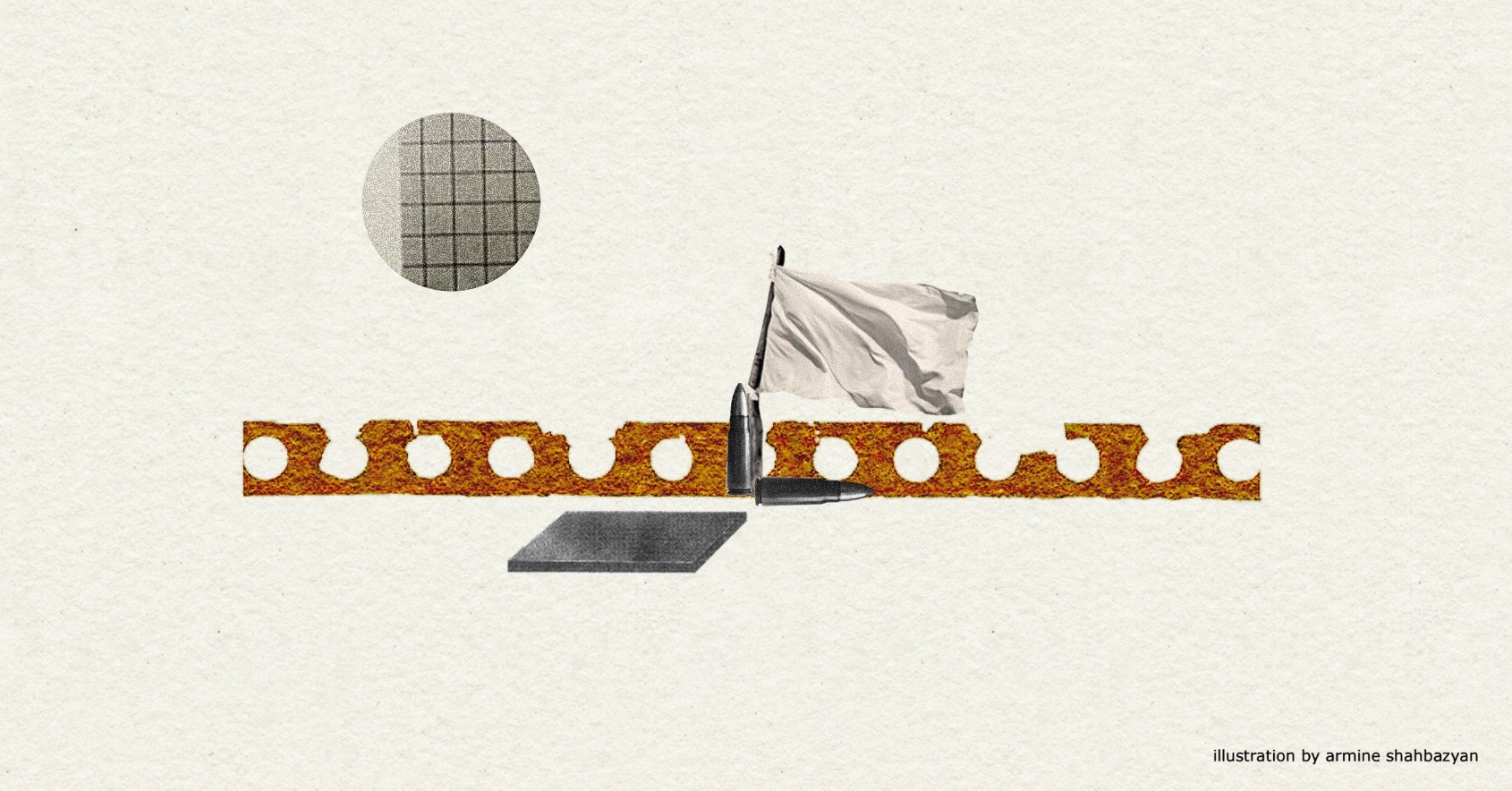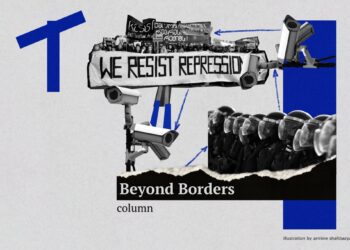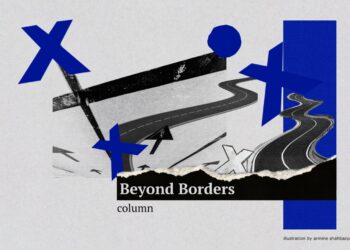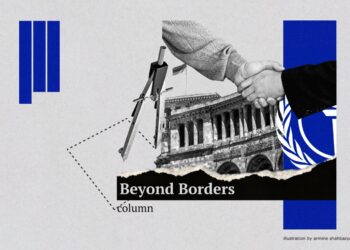
Listen to the article.
In a striking development on March 13, Armenia and Azerbaijan announced they had finalized negotiations on the Agreement on Peace and Establishment of Interstate Relations. They noted that Armenia had agreed to Azerbaijan’s terms for the last two unresolved articles of the draft: the non-deployment of third-country forces along their borders and the mutual withdrawal of international lawsuits. This marked a significant shift, demonstrating Armenia’s commitment to peace and breaking the deadlock that had stalled negotiations for several months.
Armenia’s Foreign Ministry noted, however, that while Armenia had proposed issuing a joint statement, Baku “preferred to make a unilateral statement,” referring to Azerbaijani Foreign Minister Jeyhun Bayramov’s surprise announcement in Baku that the two countries had completed negotiations. Unlike Armenia’s unconditional announcement, Azerbaijan’s announcements sent mixed signals. When the draft agreement was finalized, Azerbaijan’s President Ilham Aliyev delivered a speech at the Global Baku Forum that maintained his usual rhetoric, making both old and new accusations against Armenia. He also asserted that “Azerbaijan was the initiator of the peace process” and “even the author of the draft peace agreement.” Azerbaijan’s leadership continued to impose preconditions for signing the agreed text of the peace agreement. Their Foreign Ministry reiterated that Armenia must “eliminate the claims against Azerbaijan’s sovereignty and territorial integrity enshrined in its constitution as a prerequisite to allow the signing of the negotiated text,” and “formally abolish the obsolete and dysfunctional Minsk Group.” Representative on Special Assignments Elchin Amirbayov stated on March 19 that “[n]ow the ball is in Armenia’s court”—a characterization that inverted the actual dynamics between the two parties.
Since March 13, Prime Minister Nikol Pashinyan, Foreign Minister Ararat Mirzoyan and Security Council Secretary Armen Grigoryan have made multiple appeals to Baku, expressing Yerevan’s readiness to begin consultations on signing the peace agreement. In an interview on March 22, Mirzoyan reiterated Yerevan’s willingness to sign the treaty immediately while expressing frustration with Azerbaijan’s lack of response, noting that “Azerbaijan is introducing various new preconditions—artificial ones […]—into the peace agenda, making it more difficult to sign this treaty and establish institutionalized peace.” Meanwhile, Azerbaijan’s Foreign Minister Jeyhun Bayramov published an article on March 17, criticizing Armenia for its “reluctance to amend constitutional provisions” and “militarization with foreign backing” while citing “Armenia’s revanchism as the primary hurdle to normalization.”
Armenia’s Concessions Despite the Illusion of Reciprocity
Pashinyan argued that Armenia hasn’t made concessions to Azerbaijan, while Mirzoyan underlined that there are no unilateral provisions in the draft agreement. However, despite the reciprocal framing, the last two articles—for which Armenia accepted Azerbaijan’s terms—heavily favor Azerbaijan and represent a significant sacrifice for Armenia.
A) The Provision on the Withdrawal of International Lawsuits
The first problematic article commits both parties to withdraw their international lawsuits. Previously, Pashinyan had indicated willingness to consider this, but only if this process aligned with progress on key elements of the peace agenda and Azerbaijan abandoned its historical revisionism. Armenian authorities and public are particularly concerned about Azerbaijan’s false narrative, promoted through a government-sponsored organization and propaganda channels, that Armenia or parts of it are historically “Western Azerbaijan”. They are also worried about Azerbaijan’s demand for the return of its minority to Armenia. What was once seen as a tactic to counter Nagorno-Karabakh Armenians’cause and prevent their return has now evolved into a tool to promote Azerbaijan’s territorial expansionism.
Most Armenian human rights defenders, political analysts and civil society groups—including those considered pro-governmental—have opposed the withdrawal of international lawsuits from the International Court of Justice (ICJ) and European Court of Human Rights (ECHR). They believe this withdrawal evades accountability for the forced displacement of Nagorno-Karabakh Armenians, which has been characterized as ethnic cleansing by Armenians and several international actors. If Armenia loses its right to bring cases against Azerbaijan at the ECHR, Nagorno-Karabakh Armenians would be deprived of legal remedies for human rights violations, property claims and compensation.
Armenian legal experts assess that Armenia has a strong case and a high likelihood of success in its ICJ lawsuit against Azerbaijan. In November 2024, the ICJ dismissed Azerbaijan’s objections in the case Armenia v. Azerbaijan, allowing Armenia’s lawsuit to proceed in full. In contrast, the ICJ partially upheld Armenia’s objections, significantly reducing the scope of its lawsuit—which had served primarily as a mirroring case and bargaining chip. A victory in the ICJ case would legally establish that Armenians have been defending themselves against ethnic discrimination and the imminent threat of ethnic cleansing, countering Azerbaijan’s narrative that portrays Armenia and Nagorno-Karabakh Armenians as aggressors and occupiers.
Azerbaijan has escalated its accusations by filing arbitration claims against Armenia under the Energy Charter Treaty (ECT) and the Bern Convention on Environmental Protection. Baku claims that Armenia illegally exploited Azerbaijan’s natural resources in formerly contested areas through mining and energy production, while also causing environmental damage through deforestation and unsustainable land use. However, UN General Assembly Resolution 1803 (XVII) establishes that populations in territories with unresolved self-determination claims maintain permanent sovereignty over their natural resources—to be used for their own interests and development. Moreover, these claims face jurisdictional hurdles since Armenia did not directly govern Nagorno-Karabakh as part of its sovereign territory. Azerbaijan appears to be using these lawsuits as leverage in peace negotiations, applying legal and economic pressure on Yerevan to gain further concessions. Armenia’s
Office of the Representative on International Legal Issues has expressed confidence that Armenia will prove these claims are politically motivated and legally unfounded.
Following setbacks in international courts, Baku is conducting sham trials of former de facto authorities of Nagorno-Karabakh in a closed yet performative manner—without due process—to portray Armenia as an aggressor and occupying power. As Armenia’s PM Pashinyan has stated, intelligence reports indicate that Azerbaijani authorities are using banned psychotropic substances on captives to force testimonies against Armenia. The Armenian Foreign Ministry has documented Azerbaijan’s unfair judicial processes against Armenian prisoners, including unlawful detention, torture, and severe human rights abuses. Azerbaijan is attempting to validate its claims against Armenia through domestic trials conducted by a judiciary known for its lack of independence, politically motivated verdicts, and systematic disregard for international human rights standards—despite criticism from the UN, European Parliament and other actors.
This represents both lawfare and a warfare of narratives, with no indication that Azerbaijan will cease its aggressive propaganda against Armenia and Nagorno-Karabakh Armenians after withdrawing its lawsuits. Armenia must secure Azerbaijan’s withdrawal of not only its mirroring ICJ lawsuits but also international arbitration cases. Additionally, Azerbaijan must end its staged domestic trials and release Nagorno-Karabakh Armenian captives. Moreover, Azerbaijan must cease promoting its “Western Azerbaijan” narrative and demands regarding Azerbaijani minority return, particularly following its complete absorption of Nagorno-Karabakh and the ethnic cleansing of its Armenian population.
B) The Provision on the Non-Deployment of Third Country Forces
The non-deployment of third country forces favors Azerbaijan due to its superior military and resource capabilities compared to Armenia. From the end of the 2020 Karabakh war until early 2024, both Turkish and Russian troops were deployed in the region. During this period, Baku promoted the idea that foreign armed forces on its territory were unacceptable, drawing sovereignty narratives typical of autocratic states. In 2024, Baku secured the withdrawal of the Russian “peacekeeping” contingent from Azerbaijan, whose presence became unjustifiable after the ethnic cleansing of Nagorno-Karabakh Armenians, and the closure of the Joint Russian-Turkish Monitoring Center in Aghdam.
Armenia is a smaller country with fewer resources and limited military capabilities, working to restore its defense system while facing ongoing military threats from Azerbaijan. Its current authorities achieved the withdrawal of Russian border guards from the Armenia-Azerbaijan border and Yerevan International Airport in 2024, and from the Agarak checkpoint on the Iranian border and Margara checkpoint on the Turkish border in 2025, replacing them with Armenian border guards. This assumption of border security and management across most of its frontiers signals Armenia’s determination to establish greater sovereignty—a courageous move given its significant defense and security challenges.
EUMA Is Not a Force but a Soft Security Guarantee
Azerbaijan demands the withdrawal of the EU monitoring mission in Armenia, which is not a force but an unarmed civilian observation mission. The EU has two types of missions under its Common Security and Defense Policy framework: civilian and military, each with distinct modalities and budgeting mechanisms. Civilian missions are unarmed and funded collectively through the EU’s Common Foreign and Security Policy (CFSP) budget, while military missions receive direct funding from participating member states via the European Peace Facility.
Azerbaijan and Russia have been spreading disinformation and false narratives about EUMA since its establishment to discredit and delegitimize it. Azerbaijan labels it as a “spying” or “reconnaissance” mission and has implied it is an undercover NATO operation rather than a civilian mission. This raises the question: why does a small civilian observation mission, operating solely on the Armenian side of the border trouble Azerbaijan so greatly?
The answer became clear last week. Between March 14-31, Azerbaijan accused Armenian Armed Forces of firing at Azerbaijani positions 14 times. Armenia’s Defense Ministry refuted each accusation, noting that while Armenia had proposed establishing a joint mechanism to investigate ceasefire violations, Azerbaijan had not responded. On March 16, EUMA reported that it “dispatched patrols to various locations along the Armenia-Azerbaijan border, and the situation remains calm and quiet, with no unusual activity observed”––effectively refuting Azerbaijan’s claims.
Before EUMA was established, Azerbaijan claimed that the Armenian Armed Forces were firing at its positions to justify its creeping annexation and military offensives against Armenia. Since EUMA’s establishment, Azerbaijan has not launched any major military offensive against Armenia. Thus, EUMA has served as an effective soft deterrent for Armenia’s border security. Additionally, EUMA has conducted outreach activities in border towns and villages, enhancing the local population’s sense of human security. Most Armenians, except those aligned with the pro-Russian opposition, appreciate the EUMA’s role in Armenia. Therefore, the announcement about the EUMA’s possible withdrawal caused anxiety among the Armenian public.
In November 2024, Pashinyan stated that the EUMA’s withdrawal might be considered from the delimited section of the border. This move could potentially motivate Azerbaijan to speed up delimitation and thus de-occupy over 250 square kilometers of Armenia’s border areas. The responses of Armenian authorities regarding the EUMA’s future after the peace agreement indicate that Yerevan will discuss “acceptable and mutually beneficial agreements” with the EU about the mission’s activities following the potential ratification of the peace treaty. This suggests that while the Armenian government wants the EU Mission to remain in Armenia, there may be changes to its work modalities and mandate—perhaps continuing monitoring without patrols on the border under modified terms.
It is not unusual for EU CSDP missions to transform their mandates based on changing operational environments. For example, in the Central African Republic, the mission began as EUFOR—a military stabilization force—before transitioning to EUMAM, a defense reform advisory mission. In Kosovo, EULEX evolved from exercising executive judicial powers and policing to an advisory and monitoring mission supporting local rule-of-law institutions.
However, even if the EUMA stays, the Armenian public remains anxious about potential changes to its monitoring mandate or border patrolling function. This concern seems counterintuitive, as the signing of a peace agreement would finally allow EUMA to fulfill its original mandate of confidence-building between the parties—something that has been impossible until now. While some Armenian experts imply that the peace agreement provides better deterrence than EUMA, most worry that Azerbaijan might fabricate claims of Armenian violations as a pretext for military action, even after the agreement is signed and ratified. Other experts are worried about the transitional period, during which the EUMA may struggle to implement its mandate if tensions escalate. Azerbaijan’s failure to respond to Armenia’s proposal for a joint border violation investigation mechanism validates these concerns.
Given the lack of trust between parties, a key question is what will guarantee the sustainability of the peace agreement. While EU military peacekeepers are being discussed as a security guarantee for the Russia-Ukraine conflict, why would EU civilian observers even be required to withdraw in the Azerbaijan-Armenia conflict. The EUMA could serve as a soft security guarantee after signing of the peace agreement.
It is important to note that both articles will take effect only after the peace agreement is signed and ratified. But does Azerbaijan truly intend to finalize the treaty?
Does Azerbaijan Intend to Sign the Peace Agreement?
The reactions and behavior of Azerbaijani authorities after the announcement of concluded peace negotiations have been controversial and dubious, casting doubt on their commitment to the peace agenda.
Azerbaijani Disinformation About Ceasefire Violations by Armenia
Azerbaijan occupied more than 200 square kilometers of Armenia’s border areas in 2021-2022 and has intensified its expansionist claims toward Armenia in recent years. Pashinyan has repeatedly stated that Armenia neither intends to claim foreign territory nor plans to reclaim the occupied border regions through military force, instead seeking resolution through the delimitation process.
Most recently, Pashinyan stated that he had instructed the Ministry of Defense “not commit any violation of the ceasefire regime. Armenia is heading for peace, not war.” The Armenian Minister of Defense stated that Azerbaijan has not provided any evidence of ceasefire violations, despite Armenia’s requests to investigate these allegations.
Between March 21 and 23, various Armenian public figures reported about Azerbaijani ceasefire violations in the Syunik and Gegharkunik regions. On March 17, Azerbaijan’s State Security Service arrested an Azerbaijani citizen for publishing footage of military equipment of the Armed Forces of Azerbaijan. In response, Azerbaijani pro-government media outlets urged people not to film military equipment. When questioned by journalists, Armenia’s Defense Minister Suren Papikyan gave a vague response indicating no Azerbaijani troop buildup. Secretary of the Security Council, Armen Grigoryan, also gave an ambiguous answer. On March 31, Armenia’s MoD not only rejected Azerbaijan’s latest allegations of ceasefire violations, but also reported that last night “units of the Azerbaijani armed forces opened fire” toward a village in the Syunik region, resulting in damage to a residential house as documented in photos.
These dynamics raise concerns in Armenia that Azerbaijan is not genuinely seeking a peace agreement but rather ways to sabotage it. There is even greater concern that Azerbaijan is trying to create a pretext to attack Armenia. Armenian investigative media outlet Hetq has shown a pattern indicating that between 2021 and 2023, each wave of Azerbaijani disinformation about Armenian violations was followed by an offensive against Armenia. On March 21, some opposition figures wrote on social media that Azerbaijani Armed Forces had fired at night around Sotk where they had occupied a section of Armenia’s territory in 2021. On March 25, Armenia’s Defense Ministry clarified that “while occasional shots are recorded along the Armenia-Azerbaijan border, they do not target Armenian territory and thus do not prompt official ceasefire violation reports.” While this statement was interpreted differently by different circles, it seems to imply that Azerbaijani forces are shooting in the air trying to provoke a reaction by the Armenian Armed Forces but the latter have been instructed not to react. While it indicates a certain degree of resilience to hybrid methods, it also generates a concern that Azerbaijan may escalate shooting in the air to a real escalation any given time. Addressing this concern, Armenia’s Security Council Secretary confirmed that Armenian Armed Forces will defend Armenia’s territory if attacked.
Finally, there is an indication that Azerbaijan was preparing to launch a new military offensive against Armenia using the deadlock in negotiations over the peace agreement as a pretext for it. On March 13, Azerbaijani media outlet Caliber associated with its Ministry of Defense, claimed that Armenia is in final preparations for a new war with Azerbaijan, to complement Aliyev’s December and January interviews. Had Armenia not agreed to accept Azerbaijan’s terms on the last two unresolved articles—demonstrating its genuine commitment to peace—it could have triggered a new military attack by Azerbaijan. This suggests that Azerbaijan is employing a strategy of “compellence”, a concept in international relations that refers to forcing an opponent to act (e.g., yield territory, drop lawsuits) through the credible threat of harm, including a military attack if they don’t comply.[1] Azerbaijan is also using “salami tactics” to advance its agenda of expansionism and hegemony—a series of gradual, incremental steps—each too small to provoke a strong reaction on its own, but cumulatively leading to significant change or gain.[2]
Turning Excluded Issues Into Preconditions for Signing?
Despite Armenia’s willingness to compromise, Azerbaijan quickly shifted its narrative and raised additional demands—some stated directly, others indirectly. Most of these demands are not new; they appeared in statements and interviews by Aliyev and other officials in recent months. What is new is that they involve controversial issues deliberately excluded from the draft peace agreement due to their contentious nature. Some of these issues were already set to be resolved through other means, while others were too radical to even be included in the negotiation agenda. Azerbaijan’s attempt to frame these as preconditions for signing the agreement appears manipulative and suggests a lack of genuine interest in achieving peace.
Those preconditions and demands, their artificial nature, and the Armenian perspective on them have been elaborated in previous articles. After the announcement about the peace agreement, Azerbaijan has reiterated the following demands:
A) Explicit Formal Demands:
Dissolution of the OSCE Minsk Group as “dysfunctional and obsolete” and to prevent “Armenian revanchism,” which refers to any issue related to Nagorno-Karabakh. Pashinyan and Mirzoyan have repeatedly stated in recent months that they agree to dissolve the group; however, they have emphasized that Azerbaijan should refrain from making territorial claims and pursuing aggressive policies toward Armenia, particularly through the “Western Azerbaijan” narrative.
The demand to change Armenia’s Constitution to eliminate its reference to the Declaration of Independence, which contains a provision on Nagorno-Karabakh. Armenia’s PM and Constitutional Court have clarified that the Constitution doesn’t challenge Azerbaijan’s territorial integrity. Pashinyan has noted that while Azerbaijan’s Constitution contains more explicit territorial claims to Armenia, Yerevan is not pushing for changes to avoid deadlocking negotiations, hoping instead to resolve issues through a peace agreement.
Pashinyan has announced that Armenia plans a Constitutional referendum as part of domestic reforms, but Baku insists the peace agreement can only be signed after these Constitutional changes––meaning some time in 2026-2027. Since the Constitution requires a referendum for amendments and such referendums cannot be rushed without risking unpredictable results, Azerbaijan appears to be using this demand to undermine the peace agreement. They may even want to provoke a negative outcome to justify a new military offensive.
Excluding Constitutional amendments from the draft peace agreement could help avoid negative domestic reactions in Armenia, where many believe these changes are driven by Azerbaijan’s demands. Yet this perception persists regardless, while Azerbaijan uses the exclusion to make it a precondition. This creates a one-sided requirement, allowing Baku to maintain its own Constitution’s territorial claims to Armenia. The Speaker of Armenia’s National Assembly has suggested submitting both constitutions to the Council of Europe’s Venice Commission for its opinion. While this offers a constructive way forward, Azerbaijan is unlikely to agree, given its increasingly hostile approach to multilateral institutions, especially those focused on human rights.
B) Key Issue of Connectivity: “Zangezur Corridor” versus “Crossroad of Peace”
The issue of the transit road linking Azerbaijan with its exclave Nakhichevan through the territory of Armenia has been excluded from the draft agreement, as Armenian officials have repeatedly informed the public since 2024. This stems from fundamentally different approaches to transportation routes between the two countries: Azerbaijan, at times supported by Russia and Turkey, demands a “Zangezur corridor”, while Armenia advocates for a “Crossroads of Peace”. These proposals represent contrasting visions for regional connectivity in the South Caucasus.
Azerbaijan’s “Zangezur Corridor” seeks an unrestricted transit route through a strategic region of Armenia without Armenian oversight, effectively demanding extraterritorial rights. In contrast, Armenia’s “Crossroads of Peace” proposes a comprehensive framework for mutual regional connectivity that respects each country’s sovereignty. On March 4, Pashinyan published an article outlining proposals for communication routes between the two countries. Azerbaijan’s Foreign Ministry responded by dismissing the proposals as “impractical” and accused Armenia of “diverting attention”. As Pashinyan has expressed, “[i]t is unclear why Azerbaijan is rejecting these proposals. I hope it is not to create a false pretext for escalation.” The Armenian public fears that Azerbaijan may launch a military offensive to establish a corridor by force and occupy surrounding territories.
C) More Radical Narratives As Indirect Demands
Since the announcement, senior Azerbaijani officials have been repeating additional demands and claims as indirect preconditions, including the most radical ones from recent months. In his speech the day of the announcement on the finalization of the draft agreement, Aliyev again accused “European bureaucrats” of portraying Armenia as “a dove of peace.” He claimed the EUMA was a “reconnaissance mission” spying on Azerbaijan and argued that the European Peace Facility’s non-lethal assistance “weaponizes” Armenia, contributes to its “military build-up”, and is “preparing it for a new war” pushed by France and the former U.S. administration.
Azerbaijan has consistently framed Armenia’s defense sector restoration as a “military build-up” and “preparation for war”, while attempting to stigmatize Armenia as an “aggressor” and “fascist” country and demanding restrictions on its armed forces—all of which serve as warning signs. During a field visit to Aghdam region on March 27, Aliyev used the word “enemy” about Armenians 11 times in a 15-minute speech and once more, tried to stigmatize Armenia and Armenians as “fascist”, one of his most radical narratives tackled in detail in a previous article. Thus, even though Armenian authorities have refrained from pursuing even human rights aspects of the Nagorno-Karabakh related issues diplomatically or in international courts, Azerbaijan is aiming to reverse the narrative of the conflict and is using radical narratives to obstruct the peace agreement in the same manner as Putin is obstructing the peace agreement with Ukraine.
Pashinyan has provided multiple clarifications about Armenia’s defense reform, citing the right to self-defense guaranteed to sovereign nations under international law. He has insisted that Armenia doesn’t intend to use its armed forces for anything beyond defending its territorial integrity against potential Azerbaijani offensives, while pursuing the de-occupation of its border zones through the delimitation process. Armenia’s efforts to restore its defensive capabilities aim to reduce the significant military imbalance between the two countries—an imbalance that has emboldened Azerbaijan to use coercion and compellence tactics to extract concessions.
Positive International Reactions: Legitimizing Coercion or Pressure for Peace?
The announcement on the finalized peace agreement negotiations sparked a wave of positive reactions from states and major international organizations. UN Secretary-General António Guterres welcomed the breakthrough, encouraging both sides to stay committed to lasting peace. The EU, through its High Representative for Foreign Affairs and Security Policy, called for maintaining momentum and a compromise-oriented approach, reaffirming its readiness to support the process. Meanwhile, Council of Europe Secretary General Alain Berset underlined the importance of sustained progress toward stable peace, sovereignty, and respect for human rights, democracy, and the rule of law. NATO also weighed in, with its spokesperson expressing the Alliance’s anticipation for the treaty’s signing and ratification.
French President Emmanuel Macron and the Foreign Ministry expressed hope that no obstacles remain for signing a peace treaty, which should lead to normalized relations between Armenia and Azerbaijan. The treaty should respect both states’ territorial integrity and sovereignty while paving the way for lasting peace in the South Caucasus. U.S. Secretary of State Marco Rubio commended both countries for concluding negotiations on the historic peace treaty, describing it as an opportunity to move past decades of conflict. He noted this aligns with “President Trump’s vision for a more peaceful world” and urged both sides to sign and ratify the agreement. German Foreign Minister Annalena Baerbock praised “Armenia’s courageous concessions” and stressed the importance of continued EU monitoring to build trust in the process. In a speech to Parliament, UK Foreign Secretary David Lammy welcomed the development, encouraged swift signatures from both parties, and reaffirmed Britain’s support for peaceful resolution and regional stability. Multiple other EU countries also issued supporting statements.
Beyond the U.S. and EU responses, countries across different regions, including China, Brazil, Japan, Egypt and Kazakhstan, welcomed the finalization of the peace agreement, emphasizing its importance for regional stability. Georgia called the finalization of negotiations “a historic step toward lasting peace and stability” in the South Caucasus. Even the Collective Security Treaty Organization expressed hope that the peace agreement will be signed soon, while Russia tried to use the opportunity to reassert its influence by offering to host talks and support normalization efforts.
These statements reflect the international community’s fatigue with the conflict and its support for the Armenia-Azerbaijan peace process. There is widespread encouragement to maintain momentum and proceed with signing the agreement, with several actors offering to support the next steps.
On March 16, U.S. National Security Advisor Mike Waltz tweeted about his conversation with Hikmet Hajiyev, National Security Advisor to President Aliyev. Waltz emphasized that the “[c]onflict in the South Caucasus must end” and that “the U.S. and parties should finalize this peace deal now, release the prisoners, and work together to make the region more secure and prosperous. America’s Golden Age will bring peace and prosperity to the world, and we won’t stop working until that happens.” Notably, Waltz contacted only the Azerbaijani side and not the Armenian side, possibly suggesting that the current administration views Azerbaijan as the party impeding the peace agreement. In a March 21 interview with Tucker Carlson, U.S. Special Envoy Steve Witkoff stated that the U.S. should focus its mediation efforts on conflicts where it can have genuine impact, specifically mentioning situations involving Iran, Russia and Ukraine, and Azerbaijan and Armenia. Finally, on March 25, U.S. State Secretary Marco Rubio “welcomed the agreement on a peace treaty with Azerbaijan and underlined the importance of a lasting peace to break the cycle of regional conflict and bring security and prosperity to the South Caucasus” during his conversation with Pashinyan. The State Department press release contained two important messages: the U.S. and Armenia have “shared interests as strategic partners,” and “escalation of any form in the South Caucasus is unacceptable.” However, it is difficult to assess how long Azerbaijan’s aggressive tactics will be restrained before testing new limits. After pausing its disinformation campaign about violations of the ceasefire for just five days following Rubio’s call, Azerbaijan resumed it on March 30 and violated the ceasefire itself.
No Agreement, One-Sided Concessions or Imminent Military Attack?
The current trajectory suggests that while Azerbaijan is avoiding making a firm commitment to sign the peace agreement, it is using coercion and compellence to extract unilateral concessions, deprive Armenia of legal, diplomatic, and security deterrents, and undermine Armenia’s long-term viability as a sovereign country. This pattern also indicates the possibility of further military offensives by Azerbaijan.
This raises critical questions: Does Baku genuinely intend to sign a treaty, or is it merely using the process to gain unilateral concessions before launching another offensive––or at least establish regional hegemony? Even if the peace agreement is signed, will it be sustainable, and will Azerbaijan’s propaganda machine cease its diplomatic and information warfare and expansionist claims against Armenia?
Armenia has shown its commitment to peace—now it is time for international partners to step up and pressure Azerbaijan to sign and ratify the peace agreement to prevent another cycle of coercion and potential aggression. While the international community has praised Armenia’s concessions, it must address Azerbaijan’s continued obstruction and coercive tactics. Calls for peace must come with clear pressure on Azerbaijan to finalize the treaty without additional preconditions. The U.S., the EU, and other actors must move beyond merely applauding negotiations and take an active role in ensuring a fair, sustainable and enforceable peace.
Footnotes:
[1] Schelling, T. C. (1966). Arms and Influence. Yale University Press. https://doi.org/10.2307/j.ctt5vm52s
[2] Maas, Richard W. (2022). Salami Tactics: Faits Accomplis and International Expansion in the Shadow of Major War. Texas National Security Review. Vol 5, Iss 1 Winter 2021/2022 | 33–54 https://doi.org/10.15781/eyt5-2k84
EVN Security Report
Aliyev’s Performative Gamble: The Draft Agreement on Peace
Aliyev’s unilateral declaration of a draft peace agreement was a calculated gamble to capture U.S. attention rather than a genuine step toward peace with Armenia. This strategy backfired, exposing Azerbaijan’s bad faith engagement, with Washington preferring the narrative of its strategic partner Armenia.
Read morePolitics
Countering Azerbaijan’s Coercion: Armenia’s Deterrence Strategies
Azerbaijan employs coercive tactics to pressure Armenia into political concessions. Davit Petrosyan examines Aliyev's strategy, Armenia's vulnerabilities, and the risks of dropping legal claims. He argues that, beyond military strengthening, Armenia must develop its own coercive strategy targeting Aliyev’s key fears and vulnerabilities, effectively deterring Azerbaijan.
Read moreAzerbaijan’s Sham Trials: State-Sponsored Hatred and the Erosion of Peace
The sham trials of Nagorno-Karabakh’s former leaders and other Armenian prisoners in Baku expose Azerbaijan’s state-sponsored hatred against Armenians, fueling animosity, obstructing peace efforts and reinforcing Aliyev’s authoritarian grip.
Read moreThe Armenians of the Holy Land in Israel’s Crosshairs
The Armenian Patriarchate of Jerusalem warns it is at risk of losing properties to the Jerusalem municipality. While unrelated to the Cow’s Garden dispute, the case highlights broader threats to the Armenian community’s survival and the Christian presence in the city.
Read moreIn Search of Bayraktar: From Myth to Margin in Modern Warfare
Once hailed as a game-changer in modern warfare, the Bayraktar TB2 drone has seen its role and effectiveness evolve over time. Davit Khachatryan unpacks the realities behind the myth, analyzing its successes, limitations and shifting significance on the battlefield.
Read moreSearching for “Western Azerbaijan”
Amid ongoing conflict and fragile peace negotiations, Azerbaijan’s narrative of “Western Azerbaijan” intertwines historical revisionism, legal arguments and war rhetoric. Exploring its origins and implications, Rasmus Canbäck examines how the narrative complicates reconciliation and regional stability.
Read moreRaising the Cost of War: Armenia’s Deterrence Strategies
Analyzing the complexities of Armenia's security and strategic challenges with Azerbaijan, Davit Petrosyan examines the country’s balancing strategies, military dynamics, and geopolitical risks, offering actionable policy insights to safeguard national interests and deter escalation.
Read moreStable Majority Clause “Endangers Parliamentary Rule in Armenia”
Armenia's controversial "stable majority" provision distorts proportional representation and weakens parliamentary democracy. With elections expected in 2026, concerns remain over its impact on governance, coalition-building and legitimacy. Hranoush Dermoyan explains.
Read moreIn Armenia-China Relations, Trade Takes Center Stage
Armenia-China relations are primarily shaped by trade and expanding economic ties. While Beijing remains a key trading partner, Armenia’s foreign policy shifts have led to diplomatic uncertainties. Hovhannes Nazaretyan explores trade dynamics, investment gaps, defense cooperation and cultural exchanges.
Read moreAliyev’s Campaign: Aiming to Deter International Support for Armenia
Azerbaijani President Ilham Aliyev’s escalating rhetoric against Armenia aims to justify Baku's coercive tactics, block peace efforts and intimidate international actors. Sossi Tatikyan examines Aliyev's narratives about Western and non-Western powers and their implications for regional stability.
Read moreAliyev’s Fabricated Narratives: Unveiling the Agenda
In this comprehensive article, Sossi Tatikyan examines Azerbaijani President Aliyev’s recent interviews and their implications for Armenia-Azerbaijan relations, juxtaposing his rhetoric with PM Nikol Pashinyan’s responses and broader Armenian perspectives, offering insights and analyses.
Read moreInvestment Arbitration and Armenia: Policies, Risks and Opportunities
Investment arbitration plays a pivotal role in a country’s economic landscape, balancing investor protections with national sovereignty. Davit Khachatryan examines key cases, risks and policy implications, shedding light on how arbitration shapes Armenia’s investment climate and its broader geopolitical and economic strategies.
Read moreInternational Arbitration and Armenia: Arbitrating Animosity
Azerbaijan has been weaponizing legal instruments and treaties against Armenia, transforming tools of mutual benefit into means of antagonism. Davit Khachatryan explains the mechanisms, types and implications of arbitration, shedding light on its strategic misuse and the broader consequences for Armenia.
Read more[Beyond Borders]
Column



















